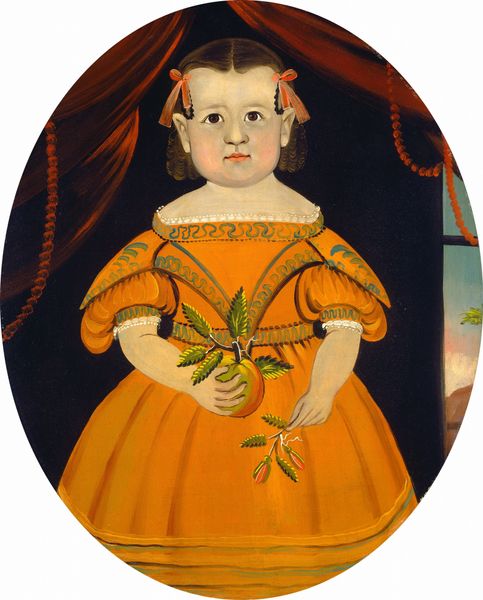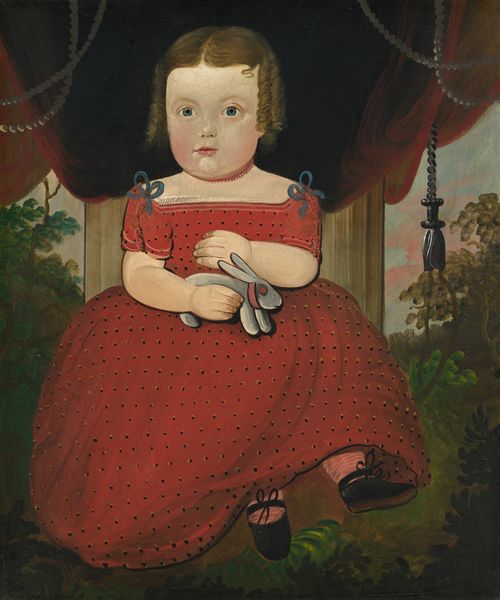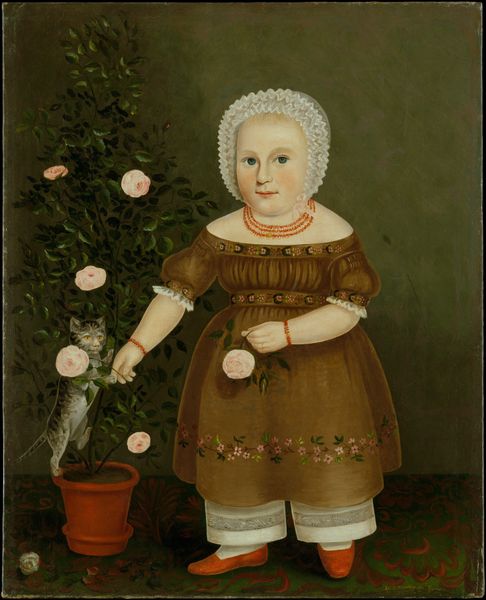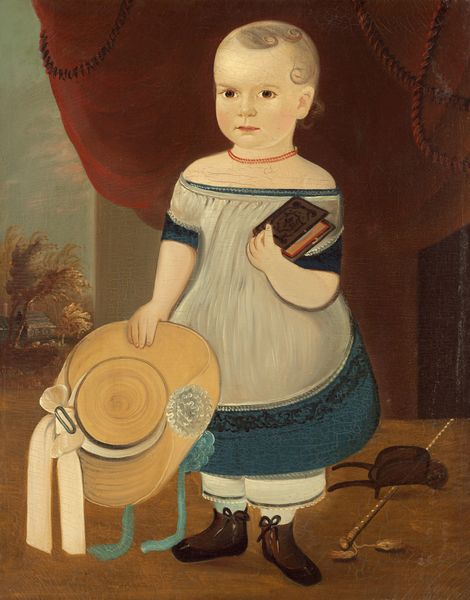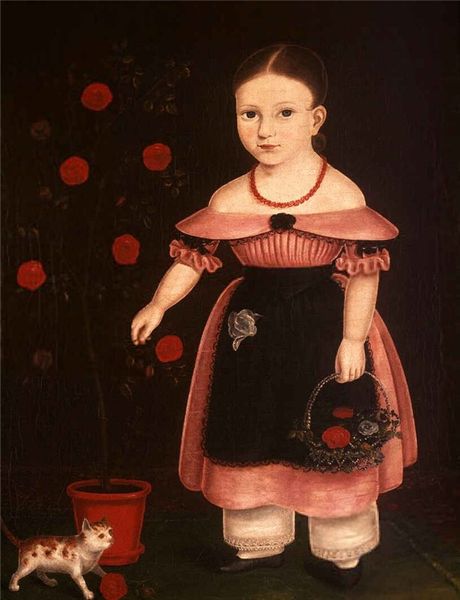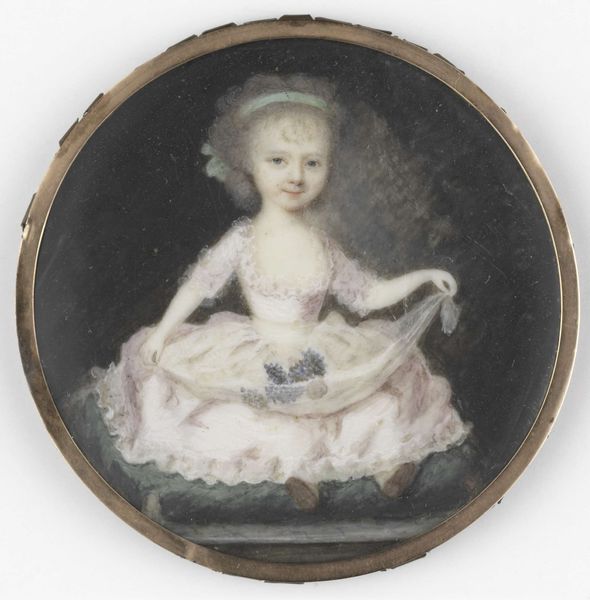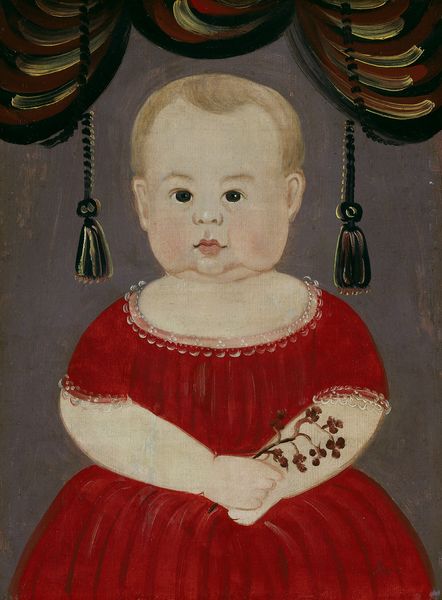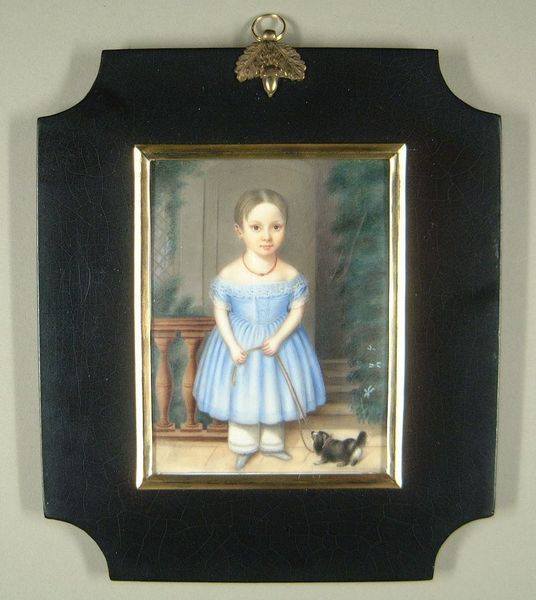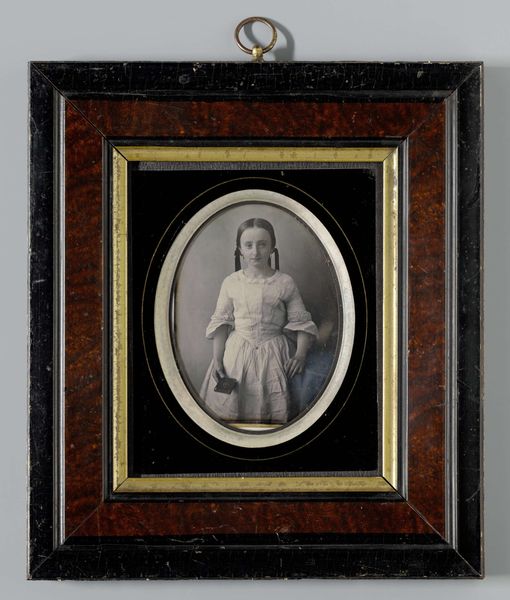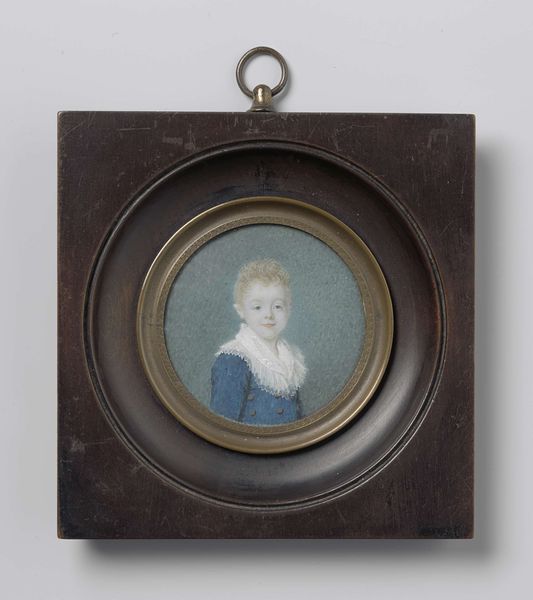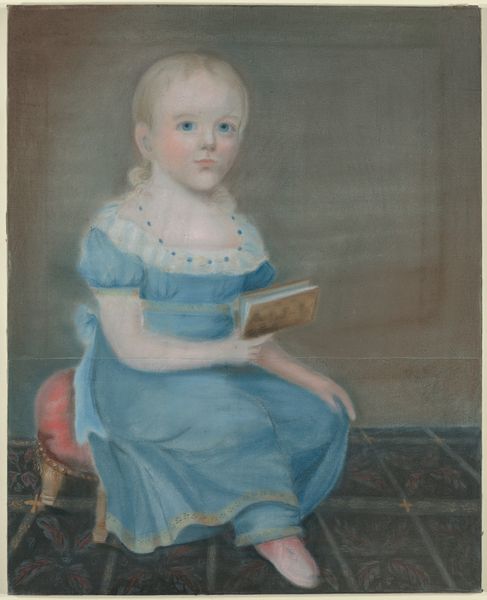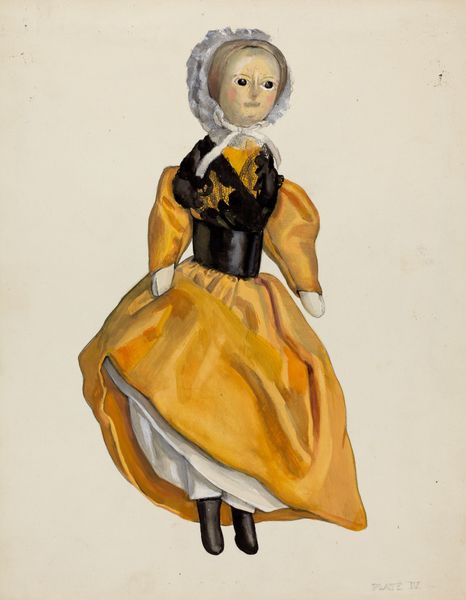
painting, oil-paint, oil-on-canvas
#
portrait
#
painting
#
oil-paint
#
figuration
#
oil-on-canvas
#
realism
Dimensions: 33 9/16 x 27 1/2 in. (85.25 x 69.85 cm) (canvas)34 3/4 x 40 3/4 x 3 3/4 in. (88.27 x 103.51 x 9.53 cm) (outer frame)
Copyright: Public Domain
Curator: Here we have what's known as "Portrait of a Young Boy," attributed to Samuel Miller, dating to about 1835. It’s oil on canvas and currently residing here at the Minneapolis Institute of Art. Editor: It's so evocative! There's an undeniable feeling of staged innocence, don't you think? Almost theatrical, with that dark backdrop. Curator: The theatricality you pick up on is interesting, considering it as a constructed display. How the making of it involves choices in fabrics for the clothes, and pigments for rendering those materials. A key aspect here might be the rising economic status the portrait is meant to reflect through meticulous detailing of material goods. Editor: Precisely! And the boy is posed with what appears to be a gold necklace and pendant held to his ear almost like he’s listening for a divine message, all of which strikes me as carefully constructed symbols of wealth, piety and perhaps a yearning for guidance or status. The dog, for instance, traditionally signifies loyalty, fidelity—is it present for a moral suggestion? Curator: Possibly. Look closer at the dog collar— likely a crafted item representing a specific economic value assigned to domestic animals in that era, as opposed to today where perhaps a microchip serves similar identifier purposes. It's also the deep cobalt pigment used in the child’s dress: the processes for mixing and applying these colors represent access to very specific markets and resources. Editor: Yet, the stiffness in the boy's pose...his gaze, directed out at the viewer, but distant. Perhaps indicating the burden placed upon him to represent the family's aspirations. And flowers were the most common item placed into memorial portraiture as symbolic mementos from loved ones. Curator: I can agree on that observation, particularly when analyzing social history by observing which consumer-produced good were important at that specific historical moment. Editor: To step back for a final note: It is just so interesting how, through carefully chosen objects and symbols, the artwork captures both the material reality and psychological landscape of the time, revealing enduring cultural preoccupations with wealth, status, and belonging. Curator: Right! Thank you, by emphasizing labor and commodities involved with early realism, we also come to realize paintings as integral objects to historical economics, beyond art.
